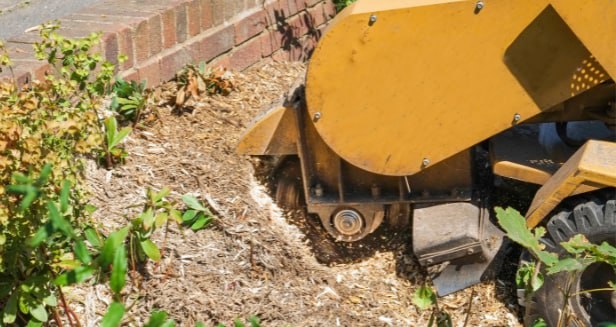
Introduction: Ensuring the safe and uninterrupted supply of electricity, telecommunications, and other essential utilities is a critical aspect of modern life. Trees growing near utility lines can pose a significant risk to these services and public safety. Sectional dismantling is a specialised tree removal technique pivotal in utility line clearance. In this blog post, we will explore how Sittingbourne Tree Surgery employs sectional dismantling for utility line clearance, emphasising its importance in maintaining reliable utility services.
The Utility of Sectional Dismantling in Utility Line Clearance:
- Precision Control: Sectional dismantling allows precise control over removing tree branches and sections. This is crucial when working near utility lines, as it minimises the risk of accidental contact and damage.
- Reduced Impact: Unlike traditional tree removal methods, sectional dismantling minimises the impact on the surrounding area. This is essential when clearing trees near utility poles, equipment, or sensitive infrastructure.
- Safety: Safety is paramount when working near utility lines, as contact can result in power outages, fires, or even electrocution. Sectional dismantling helps maintain a safe working distance from utility lines, ensuring the safety of both tree surgeons and utility personnel.
- Preservation: Sectional dismantling allows for the selective removal of branches or sections while preserving the health and structural integrity of the remaining tree. This is beneficial for the environment and aesthetics.
The Process of Sectional Dismantling for Utility Line Clearance:
- Assessment: A thorough assessment is conducted to identify trees posing a risk to utility lines. This includes evaluating trees’ health, size, and proximity to utility poles or lines.
- Safety Protocols: Strict safety protocols are established to ensure all personnel know the potential hazards and safety measures required when working near utility lines.
- Precision Cuts: Experienced tree surgeons make precision cuts to remove branches or sections of the tree. Ropes and rigging techniques are used to control the descent of tree sections, preventing contact with utility lines.
- Coordination: Close coordination between tree surgeons and utility personnel is essential to maintain a safe working distance from utility lines and to de-energise lines if necessary.
- Debris Removal: All debris, including branches and sections, is removed from the area to prevent future contact with utility lines.
Sittingbourne Tree Surgery’s Commitment to Utility Line Clearance:
At Sittingbourne Tree Surgery, we recognise the vital role sectional dismantling plays in utility line clearance. Our approach to utility line clearance includes the following:
- Safety First: We prioritise safety above all else, adhering to strict safety protocols and guidelines when working near utility lines.
- Professional Expertise: Our team of certified arborists and tree surgeons has the expertise and experience to precisely carry out sectional dismantling operations.
- Coordination: We work closely with utility companies to ensure a coordinated effort minimising utility interruptions risk.
- Environmental Responsibility: While our primary goal is utility line clearance, we also aim to minimise environmental impact by preserving healthy trees whenever possible.
Conclusion: Sectional dismantling is a valuable technique for utility line clearance, allowing for the safe and efficient removal of trees near essential utility services. At Sittingbourne Tree Surgery, we are committed to maintaining reliable utility services while ensuring our communities’ safety and preserving our natural surroundings.
Call us on: 01795 718990
Click here to find out more about Sittingbourne Tree Surgery
Click here to complete our contact form and see how we can help with your tree’s needs.